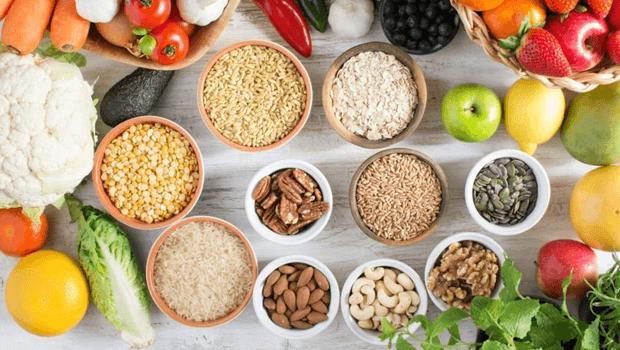- MOST RECENT

What Foods Can Cure Piles?
 23.10.2019
23.10.2019
Piles also called haemorrhoids are lumps inside and around a person’s anus (1). The veins around the anus or lower part of rectum are swollen and inflamed (2). Piles affect millions of people globally. There are several factors which may be risk factors for developing piles such as chronic constipation and straining to pass stools (3).
Types of haemorrhoids
There are two types of haemorrhoids (2)
- External haemorrhoids
- Internal haemorrhoids
Risk factors of piles
There are several risk factors which may be the reason for developing of piles (2)
- Chronic constipation or diarrhoea
- Straining while passing stools
- Diet lacking fiber or containing low amounts of fiber
- Being pregnant
- Being older than 50 years
- Lifting heavy articles regularly
Mostly the condition gets resolved on its own in a few days. But there are certain measures which can be taken to treat and prevent piles (1).
Lifestyle changes to be made to prevent and treat piles (1, 3)
- Healthy diet containing sufficient dietary fiber
- Regular exercise routine
- Improving anal hygiene
- Avoiding sitting for long periods of time in the toilet (Avoid reading in the toilet)
- Avoid using medicines which cause constipation or diarrhoea
Foods that can cure piles
Diet should include sufficient amount of
dietary fiber
plenty of water and liquids
decreased fat content (3).
Diet containing plenty of fruits and vegetables, whole grains because of high fiber content has the potential to treat and prevent piles. Drink plenty of water and include fruit juices, clear soups and other liquids in diet. Keep the fat content to minimum.
What is dietary fiber?
Fibre is a plant constituent that is generally resistant to human digestion. Fibre is also known as roughage. It is the indigestible part of plant foods that pushes through our digestive system, absorbing water along the way and easing bowel movements.
Plant material in diet that is resistant to enzymatic action in the digestive system is called as dietary fibre (4).
Dietary fiber and piles
Including fiber is an effective way to treat symptomatic haemorrhoids and it was observed that there was overall symptom improvement and including bleeding (5).
A review of literature states that higher dietary fiber intake reduces gastrointestinal disorders including constipation, and haemorrhoids (6).
Dietary fiber adds bulk to the stools and makes it soft because it absorbs water. When the stools pass smoothly the risk of piles reduces.
How much fiber should be included in the diet?
Dietary guidelines recommend inclusion of about 30 gm fibre per day (50 % from grains, 30 % from vegetables and 20 % from fruits) or 10-13 gm dietary fibre per 1000 kcal. Management of weight, prevention and management of diabetes and the metabolic syndrome can all be linked to fibre content in the diet (7).
Final word
To prevent or treat piles take diet which includes plenty of fiber. Make sure that you consume fruits and vegetables every day. Drink plenty of water and other fluids such as juices, clear soups. Exercise has to be made part of your daily routine.
References
-
National Health Service (2019). Piles (Haemorrhoids).
https://www.nhs.uk/conditions/piles-haemorrhoids/
-
National Institute of Diabetes and Digestive and kidney diseases (2016). Definition & Facts of Hemorrhoids.
https://www.niddk.nih.gov/health-information/digestive-diseases/hemorrhoids/definition-facts#what
- Lohsiriwat, V. (2012) Hemorrhoids: from basic pathophysiology to clinical management, World journal of gastroenterology. Vol. 18 (17).
https://www.ncbi.nlm.nih.gov/pmc/articles/PMC3342598/
- Dhingra, D., Michael, M., Rajput, H. and Patil, R.T. (2011) Dietary fibre in foods: A Review, Journal of food science and technology. Vol. 49 (3).
https://www.ncbi.nlm.nih.gov/pubmed/23729846
- Alonso-Coello, P., Mills, Ed., Heels-Ansdell, D., L´opez-Yarto, M., Zhou, Q., Johanson, J. F. and Guyatt, G. (2006) Fiber for the Treatment of Hemorrhoids Complications: A Systematic Review and Meta-Analysis, American Journal of Gastroenterology.
https://www.rima.org/web/medline_pdf/AmJGastroenterol2006_181%E2%80%938.pdf
- Anderson, J. W., Baird, P., Davis Jr, R. H., Ferreri, S., Knudtson, M., Koraym, A., Waters, V. and Williams, C. L. (2009) Health benefits of dietary fiber, Nutrition Reviews. Vol. 67 (4). https://onlinelibrary.wiley.com/doi/full/10.1111/j.1753-4887.2009.00189.x
- Perry, J.R. and Ying, W. (2016) A Review of Physiological Effects of Soluble and Insoluble Dietary Fibres, J Nutr Food Science. Vol. 6 (4).


